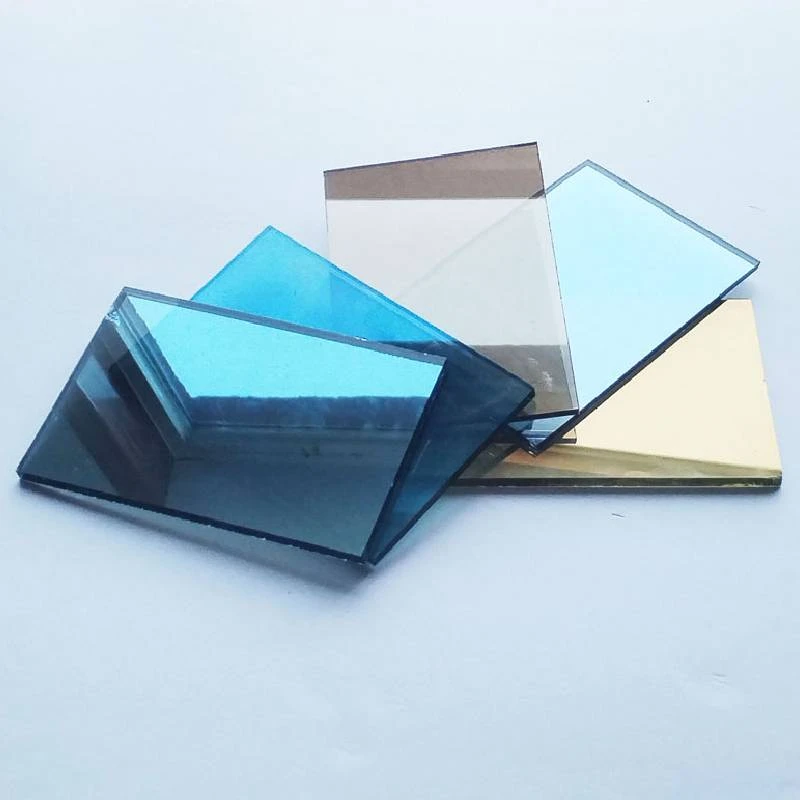The Fascinating World of One-Way Glass Windows
One-way glass, or one-way mirrors, have long captivated the imagination of architects, designers, and everyday people alike. These unique windows play a subtle but crucial role in various applications ranging from surveillance to interior design, and their functionality is based on a clever interplay of light.
At first glance, one-way glass appears to be an ordinary mirror from one side while allowing clear visibility from the opposite side. This remarkable duality is a result of the glass being partially reflective and partially transparent. The key to this phenomenon lies in the difference in lighting conditions between the two sides of the glass. When one side is brightly lit, it reflects light and appears mirrored; conversely, when the other side is darker, it allows for clear viewing.
The Fascinating World of One-Way Glass Windows
Beyond its practical applications, one-way glass has ushered in a new era of design possibilities. In modern architecture, it is frequently employed to create open, airy spaces with minimal obstructions. Imagine a chic office where employees can enjoy natural light and panoramic views while maintaining some level of privacy. Likewise, residential homes are increasingly incorporating one-way glass to enhance their aesthetic appeal. This innovation creates a seamless connection between indoor and outdoor environments, allowing homeowners to enjoy their gardens while ensuring they remain shielded from onlookers.
one way glass window
However, using one-way glass does come with its challenges. One predominant issue is the orientation of the glass. Knowing when and where to place one-way glass is crucial to maintaining its effectiveness. If light levels change — for example, as the sun sets or due to artificial lighting changes — the reflective quality may diminish. Consequently, architects and designers must carefully consider environmental factors and placement to ensure maximum functionality.
Additionally, privacy is not absolute. For instance, during times of equal illumination on both sides, the properties of one-way glass can be compromised, blurring the lines of discretion. This limitation has prompted manufacturers to develop advanced coatings and tinted films that enhance the one-way property.
Sustainability is another important consideration in the current landscape. As global awareness of environmental impact grows, the production and disposal of glass products face scrutiny. Selecting energy-efficient types of one-way glass can play a role in reducing the carbon footprint of buildings, offering thermal insulation while providing aesthetic benefits.
In conclusion, one-way glass windows are a remarkable innovation that beautifully melds functionality with design. They serve vital roles in privacy and security while enhancing the aesthetics of spaces. As technology advances, the future of one-way glass holds promise for further innovations that address privacy, sustainability, and functionality, continuing to capture our imagination in various fields. Whether in bustling city offices or quiet suburban homes, one-way glass remains a compelling blend of science and artistry, carving a distinguished niche in the realms of architecture and design.
 Afrikaans
Afrikaans  Albanian
Albanian  Amharic
Amharic  Arabic
Arabic  Armenian
Armenian  Azerbaijani
Azerbaijani  Basque
Basque  Belarusian
Belarusian  Bengali
Bengali  Bosnian
Bosnian  Bulgarian
Bulgarian  Catalan
Catalan  Cebuano
Cebuano  Corsican
Corsican  Croatian
Croatian  Czech
Czech  Danish
Danish  Dutch
Dutch  English
English  Esperanto
Esperanto  Estonian
Estonian  Finnish
Finnish  French
French  Frisian
Frisian  Galician
Galician  Georgian
Georgian  German
German  Greek
Greek  Gujarati
Gujarati  Haitian Creole
Haitian Creole  hausa
hausa  hawaiian
hawaiian  Hebrew
Hebrew  Hindi
Hindi  Miao
Miao  Hungarian
Hungarian  Icelandic
Icelandic  igbo
igbo  Indonesian
Indonesian  irish
irish  Italian
Italian  Japanese
Japanese  Javanese
Javanese  Kannada
Kannada  kazakh
kazakh  Khmer
Khmer  Rwandese
Rwandese  Korean
Korean  Kurdish
Kurdish  Kyrgyz
Kyrgyz  Lao
Lao  Latin
Latin  Latvian
Latvian  Lithuanian
Lithuanian  Luxembourgish
Luxembourgish  Macedonian
Macedonian  Malgashi
Malgashi  Malay
Malay  Malayalam
Malayalam  Maltese
Maltese  Maori
Maori  Marathi
Marathi  Mongolian
Mongolian  Myanmar
Myanmar  Nepali
Nepali  Norwegian
Norwegian  Norwegian
Norwegian  Occitan
Occitan  Pashto
Pashto  Persian
Persian  Polish
Polish  Portuguese
Portuguese  Punjabi
Punjabi  Romanian
Romanian  Russian
Russian  Samoan
Samoan  Scottish Gaelic
Scottish Gaelic  Serbian
Serbian  Sesotho
Sesotho  Shona
Shona  Sindhi
Sindhi  Sinhala
Sinhala  Slovak
Slovak  Slovenian
Slovenian  Somali
Somali  Spanish
Spanish  Sundanese
Sundanese  Swahili
Swahili  Swedish
Swedish  Tagalog
Tagalog  Tajik
Tajik  Tamil
Tamil  Tatar
Tatar  Telugu
Telugu  Thai
Thai  Turkish
Turkish  Turkmen
Turkmen  Ukrainian
Ukrainian  Urdu
Urdu  Uighur
Uighur  Uzbek
Uzbek  Vietnamese
Vietnamese  Welsh
Welsh  Bantu
Bantu  Yiddish
Yiddish  Yoruba
Yoruba  Zulu
Zulu 

